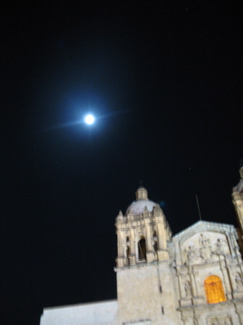
Juan Rulfo. Pedro Páramo
I know there are many great works of world literature, but the great works to which I attach myself make up a much smaller set, of which Juan Rulfo’s Pedro Páramo is one of the top. It may be that I was prepared for Juan Rulfo’s literary strategy by first studying in Spanish class in Mexico two short stories, “No oyes ladrar los perros?” and the heartbreaking “Es que somos muy pobres” hence gripped by his capacity to extend the poetic into novel form. Pedro Páramo is a work of sparse, poetic language. In January I saw an exhibit of Juan Rulfo photographs, powerful and sparse just as the writing. In the same exhibit, was an exhibit of black and white photographs of Oaxacan village life taken by an anthropologist. Juan Rulfos’ photographs showed the people and landscape as if from inside, as if the subjects had taken the pictures of themselves, in contrast to the anthropologist’s pictures which looked at the subjects from outside, trying to arouse curiosity, interest, compassion or other emotions in the viewer.
Pedro Páramo works as a mosaic with each short incident a tile, that fits into the whole, through complex intertwining structures. I’m not going to try to resolve structural issues in this post because the complexity of the work makes that impossible and I plan to write my final paper on Pedro Páramo (analyzing structure). Rulfo’s characters are integral with the landscape, which has both topographical and emotional qualities. Narrated events in Pedro Páramo are from various times, principally the time of the narrator, and two or three time periods from the title character’s life. The overall sequence moves in reverse, for example, a principal character we meet in the beginning, the narrator’s guide Abundio Martinez, appears also towards the end in a defining incident from years before.
Among the structures, Juan Rulfo works with are what I think is a poetic structure of “catch phrases” that pick up the threads across similar time periods. He also seems to me to be working with a Dante Divine Comedy type structure, not sequentially but interwoven. (Pedro Páramo, as far as my reading at present, depicts the institutional church unambiguously negatively.)
The town of Comal is described as an inferno (hot as a comal), to which Abundio, the guide, leads the narrator. (As far as location names go, the reference to Sayula will be worth exploring.) The narrators “experiences” arriving in Comal have a purgatory quality to them. Susana St. Juan seems to be linked with Paradiso elements and she is reminiscent of a Beatrice figure – we first meet her flying kites, and Pedro recalls seeing her ascent to heaven when she dies (this incident recalls to me the John’s gospel version of the “empty tomb” where Jesus tells Mary “do not grasp me [in Greek it’s the word for sexual intercourse] I have not yet ascended to the Father”. The description of Susana’s descent into the skeleton-strewn mines, and it’s placement near her death, also plays into a Christ-Susana resemblance.] In my opinion the Dante analogy is suggestive, not rigid, one of many strategies that give multiple layers to the concreteness of each incident

I really liked your analogy to the different stories, passages and sections as pieces in a mosaic. I think what's great about Pedro Paramo is the manner in which such personal and private stories ultimately add up to the portrait of a town, a society, and perhaps Mexico.
ReplyDelete